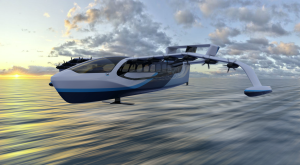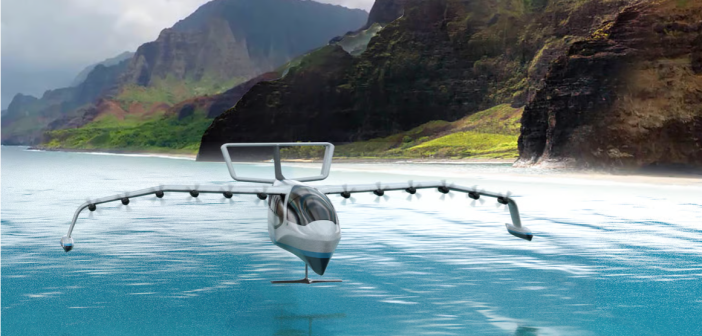Here’s something new to get you around on – and above – the water: The gull-winged Regent Seaglider, an all-electric vessel with a hydrofoil that can fly about 180 miles using the ground effect principle to stay just 30 to 60 feet above the water.
Regent has about $100 million in venture capital funding, with much of it coming from Mark Cuban, owner of the Dallas Mavericks and Shark Tank participant, and James Park, founder of Fitbit. That’s just pocket change compared to the $8 billion that Regent says it has on its pre-order books.
The Seaglider is a unique vessel, not a conventional boat, not an electric hydrofoil, and not an airplane either. It can float at a dock (using existing infrastructure) and cruise through a harbor at low speeds. At about 20 mph the Seaglider extends a retractable hydrofoil, just like the ones currently used on most electric boats, that lifts it above the waves to fly at low levels. Here’s where the ground effect kicks in: When a plane flies at extremely low levels, within the length of its own wingspan, the ground effect provides a cushion of air for it ride, providing lift and range.

The wingspan of the Seaglider is 65 feet. It is designed to carry 12 passengers and a crew of two for 180 miles, with a top speed of 180 mph. It has 12 sets of propellers and a battery the equivalent to the batteries of seven Teslas. The motors, battery packs and other key components can be swapped out if something goes wrong; maintenance costs are minimal.
A state-of-the-art electronics system runs all the controls, since both hydrofoil and ground-effect vehicles require precise control and reaction times.
Regent flew a prototype Seaglider, made by the Moore Brothers Company, a manufacturer of composite materials in Bristol, Rhode Island, in September, 2022, and a full-scale mockup last April. It says it can ramp up production in a year or two.
One major issue: Whether the Seaglider falls under the jurisdiction of the FAA or the Coast Guard, or both. Regent says its ground-effect vessel should be regulated by the Coast Guard. Stay tuned.
Read more: http://regentcraft.com and see the video below:




